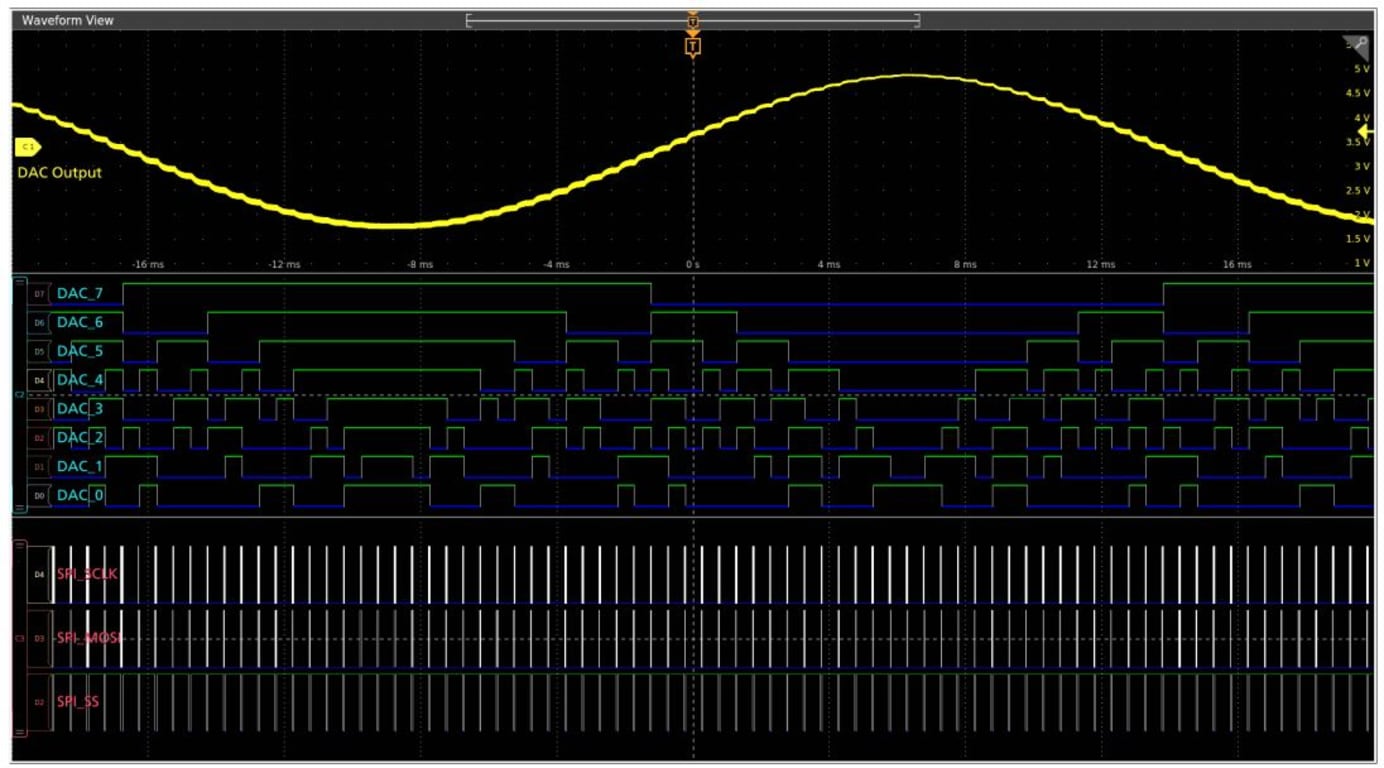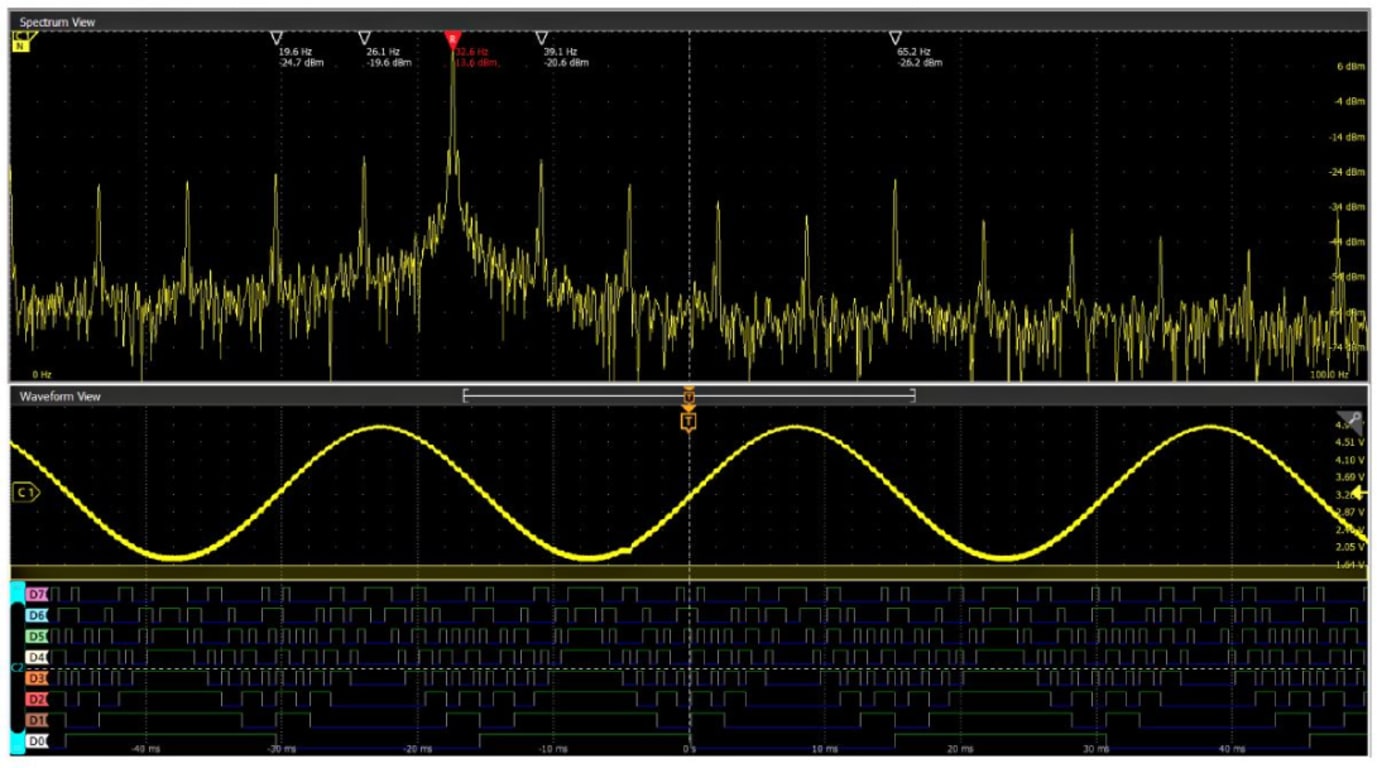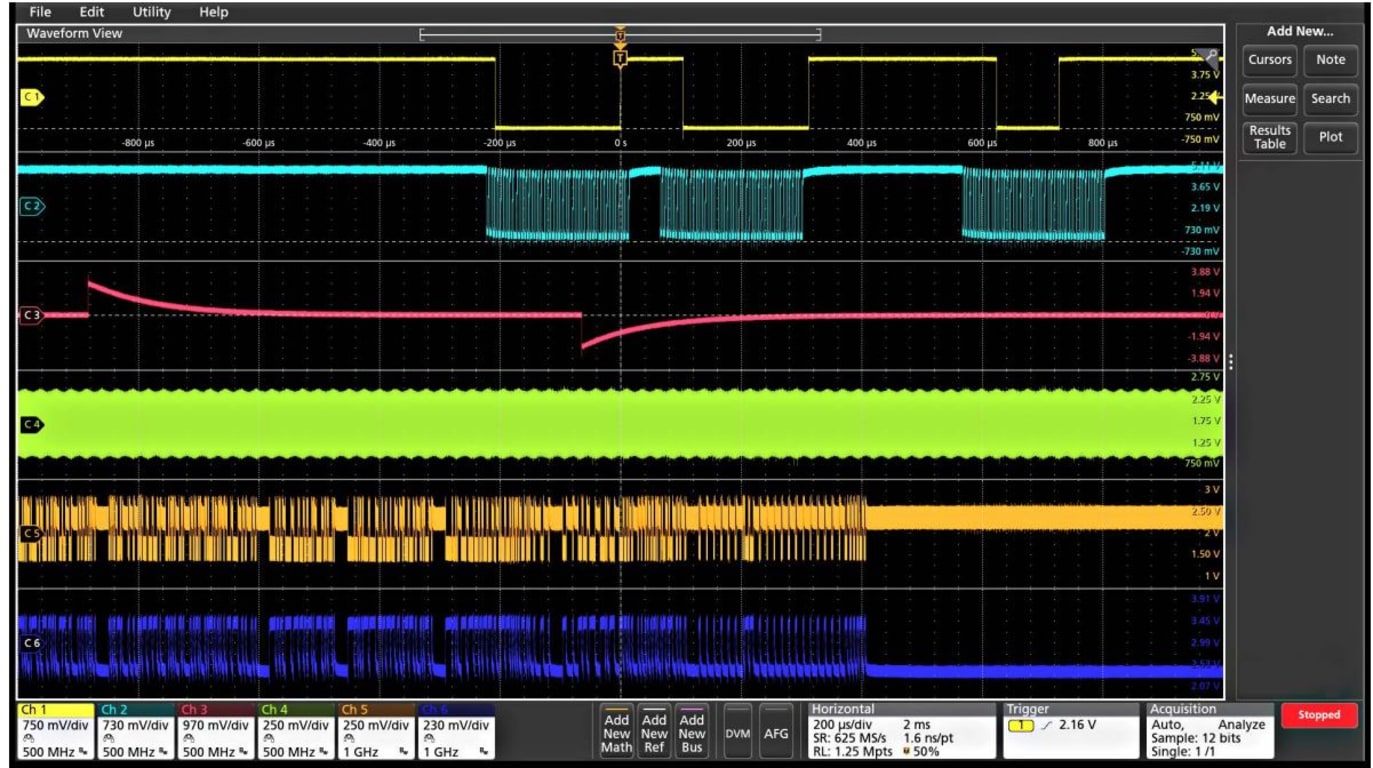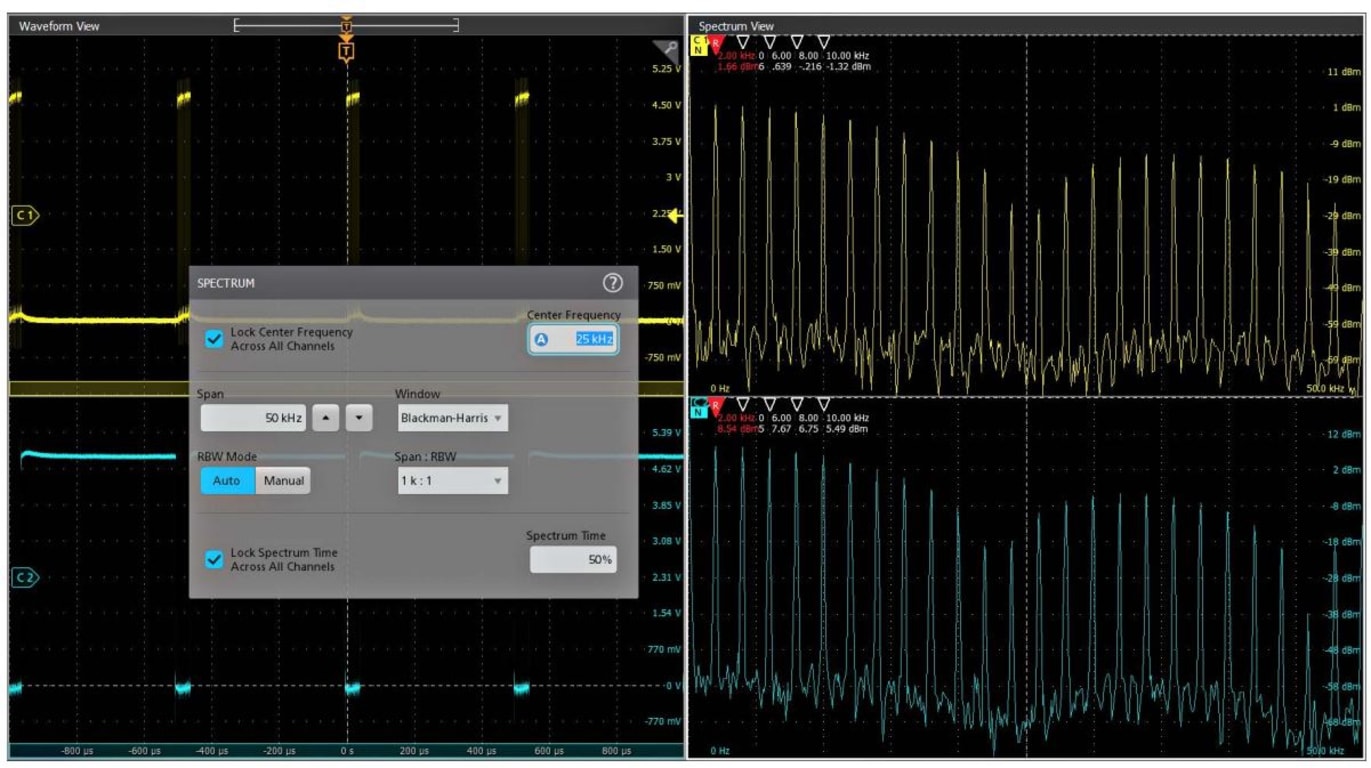No products in the cart.
Need help? Call us:
+1 (833) 763-7837
Menu
Categories
- Microscopes
- Power Measurement
- Automotive Test Tools
- Conduit Benders
- Signal Generators / Counters
- Thermal Imagers
- Borescopes / Boroscopes
- Datacom and Networking Products
- Accessories
- Fiber Optic Cables
- Plumbing Accessories
- Crimper Accessories
- Bottles and Dispensers
- LCR Test Fixtures
- Training and Education
- Gas Detection Accessories
- Precision Measuring Instrument Accessories
- Datacom Accessories
- Repair Parts and Fuses
- LED and LCD Displays
- Underground Utility Location Accessories
- Attenuators
- General Accessories
- Dry Block Bath Inserts
- Scale Accessories
- Manuals
- Vibration Accessories
- Cables - Misc
- GPIB Adapters
- Enclosure Accessories
- Shunts
- Air Purification Accessories
- Microphones
- Video Accessories
- Carrying Straps, Lanyards and Harnesses
- Heating Elements
- EMI Accessories
- Software
- Antennas
- Microscope Accessories
- Voltage Transformer
- Carts
- Printers and Printing Supplies
- Induction Heater Accessories
- Soldering Accessories
- Motors
- Warranty and Calibration
- Cases
- Probes
- Input Cards
- Spectrum Analyzer Accessories
- Options
- Hipot Accessories
- HVAC Accessories
- Rack Mounts and Stands
- Jacks /Adapters /Plugs /Clips /Terminators/Coaxial
- Static Control Accessories
- Pinhole/Holiday Detector Accessories
- Material Handling Accessories
- Case and Cart Accessories
- Barcode Scanners
- Jobsite Storage and Cabinets
- Switch and Semiconductor Modules/Access
- Pressure Calibrator Modules
- Test Fixtures
- Cathodic Protection Accessories
- Batteries and Chargers
- Knockout Accessories
- Test Leads and Instrument Accessory Kits
- FIber Optic Accessories
- Hoses - Miscellaneous
- Coaxial
- Lab Accessories
- Thermal Imager Accessories
- Amplifiers / Preamps / Preamplifiers
- Indoor Air Quality
- Prototyping
- Reliability / Preventative Maint / Rotational
- Safety Testing / Surge Testing
- Toys / Cool Stuff
- Voltage / Continuity and Non-Contact Testers
- Battery Testing
- Decade Boxes
- Materials Testing
- Personal Protective Equipment
- Thermometers
- Network Analyzer
- Solar Analyzers
- Programmers / IC and RAM Testers
- Wire Tracers / Circuit Breaker Tracers
- Enclosures and Boxes
- Gas Detection
- Megohmmeter / Insulation Resistance Testers
- Dataloggers Data Acquisition
- Transmission Line/Station Testing
- High Current Detectors / Indicators
- High Voltage Detectors / Indicators
- Hot Sticks
- Phasing Sticks
- Transmission Cable Height Meters
- Circuit Breaker Testers
- Primary Injection Test Equipment
- Corona Detection
- Secondary Injection Test Equipment
- Safety Equipment
- Transformer Testing/TTR
- SF6 Gas Leak Detectors
- Dielectric Oil Testing
- Cable Testing
- Oscilloscopes
- LCR Meters / Impedance Measurement Products
- Process / Calibration
- Clamp Meters
- Electrical Parts and Products
- Terminals and Crimps
- Electrical Jumpers and Pigtails
- Temporary Power Distribution
- Electrical Parts
- Wall Plates
- Electrical Plugs and Connectors
- Wire Management
- Line Splitters
- Wire Ties
- Lockout / Tagout
- Outlet Boxes
- Pulling Products
- Work Lighting and String Lighting
- Pushbutton Pendant Stations
- Cable Reels
- Receptacle Testers
- Cable and Wire
- Terminal Blocks and Strips
- Electrical Cord
- RF, Microwave, EMI
- Thickness Gauges
- Audio Equipment
- Surveying / Construction Measurement
- Current Sensors
- Flow Measurement
- Distance Meter
- Signal Level Meters - CATV / CCTV / Satellite
- Environmental Testers / Physical Property
- Dissolved Oxygen Meter / Fluoride
- Sound Level Meters
- EMF / ELF Meter
- Stopwatches / Timers / Clocks
- Heat Index Monitors
- Water Quality Meters
- Humidity Meters
- Weather Measurement
- Hygrometers
- Water Quality Accessories
- Moisture Meters
- Wind Tunnels
- Nuclear Radiation Monitors
- PH / ORP Meters
- Anemometer / Air Flow
- Psychrometer
- Barometers and Altimeters
- Refractometers / BRIX
- Chlorine Tester
- Scales / Weight
- Soldering Equipment
- Soldering Irons
- Vacuum Pick-Up Tools
- BGA Rework Station
- Soldering Tweezers
- Soldering Tip Thermometers
- Hot Air Guns
- Hot Air Pencils
- PCB Supports and Holders
- Solder Wick
- Desoldering Irons
- Soldering Tip Cleaners
- Lead Forming Equipment
- Fume Extraction
- Sponges and Brass Wool
- Soldering Stands
- Pre-Heater
- Cleaning Pins and Drills
- Soldering Equipment
- Soldering Pots
- Nitrogen Generation
- Flux
- Thermal Wire Strippers
- Soldering Stations
- Flux Remover
- Tips
- Desoldering Equipment/Rework Stations
- Chemicals
- Nozzles
- Soldering Robots
- Depaneling Systems
- Solder
- Dispensing Equipment
- Color and Appearance
- Ground Testers
- Multimeters
- Power Supplies
- Sporting / Hunting / Law Enforcement Optics
- Protocol Analyzers
- Workbenches
- Micro-Ohmmeter / Milliohmmeter
- Phase / Motor / Transformer Testing
- Radiometric
- Video Test Equipment
- Life Sciences Equipment
- Flame Photometers
- Recirculating Chillers / Coolers
- Laboratory Water Purification Systems
- Fluidized Bed Baths
- Refrigerated Heating Circulators
- Magnetic Bead Based Purification
- Flocculators
- Rotary Evaporators
- Melting Point Apparatus
- Gel Imaging Electrophoresis
- Shakers and Rockers
- Mixers Rotators and Stirrers
- Autoclaves and Sterilization
- Glassware Washers-Dryers
- Slide Warmers
- Bunsen Burners
- Heating Mantles / Electromantles
- Spectrophotometer
- Centrifuges
- Homogenizers
- Thermal Cycler / PCR
- Cold Storage
- Incubators
- Titrators
- Colony Counters
- Kjeldahl Apparatus
- Water Baths and Liquid Baths
- Environmental Test Chambers
- Pipettes
- Laboratory Ovens
- Lab Apparatus - Misc
- Dry Block Heaters and Cooling Blocks
- Reaction Station
- Laboratory Pumps
- Panel Meters
- Tools
- Keystock
- Drill Bits and Sets
- Flashlights and Headlights
- Hex Drivers, Torx Drivers
- Cutting Tools
- Other Hand Tools
- Layout Fluid
- Combination Squares
- HVAC Service Tools
- Spatulas
- Multi-Tools
- Tweezers
- Maintenance Kits
- Level Measurement
- Threaded Rod
- Probes & Scribes
- Fiber Optic Cable Tools and Fiber Scopes
- Blackeners
- Punch & Die Sets
- Pliers
- Tool Wrap
- Sockets & Ratchets
- Drill Rod
- Shims & Shim Stock
- Pneumatic Hand Tool Operators
- Wire
- Dry Lubricants
- Datacom / Fiber Optic Tools
- Punchdown Tools
- Insulated Tools
- Feeler Gage
- Cable Strippers
- Screwdrivers
- Electric Screwdrivers
- Ground Flat Stock
- Wrenches & Wrench Sets
- Cable Cutters
- Telecom Service Tools
- Hose Benders
- Power Tools
- Knockout Tools
- Telescopic Tools
- Hose Clamps
- Cable Tie Guns
- Remote Hydraulic Pumps
- Tool Kits
- Vises
- Hot Melt
- Conduit Tools
- Cutters
- Crimpers
- Wire Strippers
- Video Distribution Equipment
- Cleanroom
- Hydraulic Cylinders
- Blower Door and Duct Testing
- Health and Safety
- Static Control
- Force / Torque / Hardness Meters
- HVAC Equipment and Instruments
- HVAC - Testing - Adjusting - Balancing
- HVAC Equipment - Misc
- HVAC Manifolds and Gauges
- Refrigerant Recovery Tanks
- HVAC Vacuum Pumps
- Tubing Tools
- Refrigerant Leak Detectors
- Vacuum Gauges
- Hose Adapters, Valves and Parts
- Combustion Analyzers
- Automotive RRR Machines
- Brazing
- Smoke Pump Test Kits
- Refrigerant Recovery Machines
- Logic Analyzers
- Leakage Detectors
Tektronix MSO46B/4-BW-200 – Mixed Signal Oscilloscope (6 Flex Channels / 200 MHz Bandwidth)
Brand:
30 people are viewing this product right now
$12,600.00
Shipping calculated at checkout.
Estimated delivery:3 days
Mixed Signal Oscilloscope, 6 FlexChannels, 200 MHz, 6.25 GS/s, 4 Series B
- 6 Flex channels / 200 MHz bandwidth
- Each Flex channel can accommodate one analog signal or eight digital logic inputs
- TLP058 logic probe sold separately
- It is possible to use combinations of analog and digital signals simultaneously (3 analog/24 digital, 2 analog/32 digital, etc)
- 6.25 GS/s sample rate (all analog/digital channels)
- 31.25 Mpt standard record length (62.5Mpt via option SUP4-RL-1)
- Built-in 50 MHz arbitrary/function generator (option SUP4-AFG)
- 13.3” capacitive touch screen with gesture support (1920 x 1080)
- Synchronized, multi-channel spectrum analysis facilitates noise hunting and RF measurements
- 12 bit ADC (up to 16 bit in high res mode)
SKU:
Tektronix MSO46B/4-BW-200
Tags: Digital Oscilloscopes, Oscilloscopes
Categories: Digital Oscilloscopes
Have any Questions?
Feel free to Get in touch
Guarantee Safe and Secure Payment Checkout
Description
![]()
![]()
![]()
![]()
![]()
![]()

Tektronix MSO46B/4-BW-200
- 6 Flex channels / 200 MHz bandwidth
- Each Flex channel can accommodate one analog signal or eight digital logic inputs
- TLP058 logic probe sold separately
- It is possible to use combinations of analog and digital signals simultaneously (3 analog/24 digital, 2 analog/32 digital, etc)
- 6.25 GS/s sample rate (all analog/digital channels)
Mixed Signal Oscilloscope (6 Flex Channels / 200 MHz Bandwidth)
The Tektronix 4 Series B MSO sets a new standard for performance, analysis capabilities and overall user experience in bench oscilloscopes — ideal for debugging and validating embedded systems and power converters. The second generation of this instrument incorporates a new processing platform, more than doubling its responsiveness, and significantly accelerating measurements and data transfers with full support for remote operation and control. Models are available with 4 or 6 FlexChannel inputs for high visibility into designs. High-resolution 12-bit sampling delivers precise measurements on a new higher-contrast 13.3-inch HD display. And synchronized, multi-channel spectrum analysis facilitates noise hunting and RF measurements.
This exceptional measurement performance is paired with an intuitive award-winning user interface making it easy to achieve fast, accurate results.
Several versions available
The 4 Series B is offered with 4 or 6 Flex channels and bandwidth up to 1.5 GHz. The chart below provides a brief overview of each.
| Bandwidth | Flex Channels | Digital channels | |
| MSO44B/4-BW-200 | 200 MHz | 4 | 32 |
| MSO44B/4-BW-350 | 350 MHz | 4 | 32 |
| MSO44B/4-BW-500 | 500 MHz | 4 | 32 |
| MSO44B/4-BW-1000 | 1 GHz | 4 | 32 |
| MSO44B/4-BW-1500 | 1.5 GHz | 4 | 32 |
| MSO46B/4-BW-200 | 200 MHz | 6 | 48 |
| MSO46B/4-BW-350 | 350 MHz | 6 | 48 |
| MSO46B/4-BW-500 | 500 MHz | 6 | 48 |
| MSO46B/4-BW-1000 | 1 GHz | 6 | 48 |
| MSO46B/4-BW-1500 | 1.5 GHz | 6 | 48 |
What is a Flex Channel?
The 4 Series B MSO redefines what a Mixed Signal Oscilloscope (MSO) should be. FlexChannel technology enables each channel input to be used as a single analog channel, eight digital logic inputs (with the TLP058 logic probe), or simultaneous analog and spectrum views with independent acquisition controls for each domain. Imagine the flexibility and configurability this provides.
With a six FlexChannel model, you can configure the instrument to look at six analog and zero digital signals. Or five analog and eight digital. Or four analog and 16 digital, three analog and 24 digital and so on. You can change the configuration at any time by simply adding or removing TLP058 logic probes, so you always have the right number of digital channels.
Previous-generation MSOs required tradeoffs, with digital channels having lower sample rates or shorter record lengths than analog channels. The 4 Series B MSO offers a new level of integration of digital channels. Digital channels share the same high sample rate (up to 6.25 GS/s), and long record length (up to 62.5 M points) as analog channels.
Each TLP058 logic probe provides eight high-performance digital inputs. Please note, the TLP058 is sold separately.

Channel 2 has a TLP058 Logic Probe connected to the eight inputs of a DAC. Notice the green and blue color coding, where the ones are green and the zeros are blue. Another TLP058 Logic
Probe on Channel 3 is probing the SPI bus driving the DAC. The white edges indicate higher frequency information is available by either zooming in or moving to a faster sweep speed on the next acquisition.

Beyond just analog and digital, FlexChannel inputs include Spectrum View. This Tektronix-patented technology enables you to simultaneously view both analog and spectral views of all your analog signals, with independent controls in each domain.
Unprecedented signal viewing capability
The 4 Series B MSO offers a revolutionary new Stacked display mode. Historically, scopes have overlaid all waveforms in the same graticule, forcing difficult tradeoffs:
- To make each waveform visible, you vertically scale and position each waveform so that they don’t overlap. Each waveform uses a small percentage of the available ADC range, leading to less accurate measurements.
- For measurement accuracy, you vertically scale and position each waveform to cover the entire display. The waveforms overlap each other, making it hard to distinguish signal details on individual waveforms.
The new Stacked display eliminates this tradeoff. It automatically adds and removes additional horizontal waveform ‘slices’ (additional graticules) as waveforms are created and removed. Each slice represents the full ADC range for the waveform. All waveforms are visually separated from each other while still using the full ADC range, enabling maximum visibility and accuracy. And it’s all done automatically as waveforms are added or removed! Channels can easily be reordered in stacked display mode by dragging and dropping the channel and waveform badges in the Settings bar at the bottom of the display. Groups of channels can also be overlaid within a slice to simplify the visual comparison of signals.


13.3” capacitive touch screen with gesture support
Oscilloscopes have included touch screens for years, but the touch interface has been an afterthought. The 4 Series B MSO display includes a capacitive touchscreen and provides the industry’s first oscilloscope user interface truly designed for touch.
The touch interactions that you use with phones and tablets, and expect in a touch enabled device, are supported.
- Drag waveforms left/right or up/down to adjust horizontal and vertical position or to pan a zoomed view
- Pinch and expand to change scale or zoom in/out in either horizontal or vertical directions
- Drag items to the trash can or drag them off the edge of the screen to delete them
- Swipe in from the right to reveal the Results Bar or down from the top to access the menus in the upper left corner of the display
Smooth, responsive front panel controls allow you to make adjustments with familiar knobs and buttons, and you can add a mouse or keyboard as a third interaction method.
Spectrum view
It is often easier to debug an issue by viewing one or more signals in the frequency domain. Oscilloscopes have included math-based FFTs for decades in an attempt to address this need. However, FFTs are notoriously difficult to use for two primary reasons.
First, when performing frequency-domain analysis, you think about controls like Center Frequency, Span, and Resolution Bandwidth (RBW), as you would typically find on a spectrum analyzer. But then you use an FFT, where you are stuck with traditional scope controls like sample rate, record length and time/div and have to perform all the mental translations to try to get the view you’re looking for in the frequency domain.
Second, FFTs are driven by the same acquisition system that delivers the analog time-domain view. When you optimize acquisition settings for the analog view, your frequency-domain view isn’t what you want. When you get the frequency-domain view you want, your analog view is not what you want. With math-based FFTs, it is virtually impossible to get optimized views in both domains.
Spectrum View changes all of this. Tektronix’ patented technology provides both a decimator for the time domain and a digital downconverter (DDC) for the frequency domain behind each FlexChannel. The two different acquisition paths let you simultaneously observe both time- and frequency-domain views of the input signal with independent acquisition settings for each domain. Other manufacturers offer various ‘spectral analysis’ packages that claim ease of use, but they all exhibit the limitations described above. Only Spectrum View provides both exceptional ease of use and the ability to achieve optimal views in both domains simultaneously.
Traditionally, performing RF measurements, such as RF Channel Power (CHP), Adjacent Channel Power Ratio (ACPR), and Occupied Bandwidth (OBW), required a dedicated spectrum or signal analyzer or spectrum analyzer software. This additional hardware or software leads to more complexity and higher costs. Available standard with Spectrum View, integrated RF Measurements on each channel save users time, bench space, and costs with the ability to validate RF transmitter CHP, ACPR, and OBW directly on the oscilloscope.

Customizable with software options
Tektronix offers a wide variety of software options to customize the 4 Series B to your specific application. Options include record length extension, waveform generation, protocol analysis, power analysis and more. Available options can be found in the accessories section of this page.
To simplify the ordering process, several option bundles are also available:
- 4-STARTER-PER – Includes I2C, SPI, RS-232/422/UART serial trigger and analysis, AFG (Arbitrary/Function Generator)
- 4-PRO-SERIAL-PER – Includes 4-STARTER plus 62.5 MS/ch record length and additional select serial analysis options
- 4-PRO-POWERPER – Includes 4-STARTER plus 62.5 MS/ch record length and select power analysis options
- 4-PRO-AUTO-PER – Includes 4-STARTER plus 62.5 MS/ch record length and select automotive analysis options
- 4-PRO-MILGOV-PER – Includes 4-STARTER plus 62.5 MS/ch record length and additional select serial analysis options
- 4-ULTIMATE-PER – Includes 4-STARTER, all 4-PRO bundle options plus 62.5 MS/ch record length and RF vs Time traces, triggers, Spectrograms, and IQ capture, extended Spectrum View capture bandwidth, and video trigger options
Oscilloscopes/Digital Oscilloscopes Template | |
|---|---|
| Bandwidth | 200 MHz |
| Channels | 6 |
| Sampling Rate | 6.25 GS/S |
| Memory | 31.25 MP [megapoints] (32000 kB) |
| Rise Time | 2.3 ns |
| # Logic Channels | 48 EA |
| Waveforms per second | 500000 |
| Screen Size | 13.3 IN |
| Bits | 12 |
Product General Attributes | |
| Warranty | 1 YEARS |
| Safety Approval | CE, CSA, RoHS, UL |
| Interfaces I/O | LAN / Ethernet, LXI, USB Host, HDMI, USB |
| Storage | Internal Memory |
| Product Weight | 16.8 LBS |
| Product Height | 13.8 IN |
| Product Length | 15.9 IN |
| Product Width | 10.4 IN |
| Shipping Weight | 20.00 LBS |
Be the first to review “Tektronix MSO46B/4-BW-200 – Mixed Signal Oscilloscope (6 Flex Channels / 200 MHz Bandwidth)”
You must be logged in to post a review.
| Weight | 16.8 lbs |
|---|---|
| Dimensions | 15.9 × 10.4 × 13.8 in |
Related products
Sale!
Tektronix MSO24 2-BW-100 – Mixed Signal Oscilloscope (100 MHz / 4 Channel)
SKU: Tektronix MSO24 2-BW-100Siglent SDS3034X HD – Mixed Signal Oscilloscope (4 Channel / 350 MHz)
SKU: Siglent SDS3034X HD $3,690.00Sale!
Rigol DHO1072 – 2 Channel / 70 MHz Digital Oscilloscope
SKU: Rigol DHO1072Sale!
Rigol DHO1104 – 4 Channel / 100 MHz Digital Oscilloscope
SKU: Rigol DHO1104
This website uses cookies to improve your experience.
By using this website you agree to our Privacy Policy.
By using this website you agree to our Privacy Policy.
Ok, I am ready
Our team of knowledgeable professionals is here to help you make informed decisions. Whether you need product recommendations, technical support, or guidance on your purchase, we're just a click away.
Contact Us Now:
📧 sales@nestesinstruments.com
📞 +1 (833) 763-7837
Let us assist you in finding the perfect solution!
Contact Us Now:
📧 sales@nestesinstruments.com
📞 +1 (833) 763-7837
Let us assist you in finding the perfect solution!























Reviews
There are no reviews yet.